Decorative plaster in the bathroom is no longer exotic
Until recently, decorative plaster in the bathroom was perceived somewhat ambiguously. The appearance of the bathroom, which is familiar to us, has developed - the entire wall, or at least up to half, is covered with tiles. The emergence of new materials has made such a picture no longer mandatory.
What are the features of bathroom decoration?
The answer lies on the surface - in the high humidity of the room. Everything in the bathroom is constantly exposed to moisture, even if there is direct contact with water. This alone makes it extremely serious to approach the choice of finishing options for the premises and the materials used.
Moreover, as already mentioned, modern materials allow the use of new ways of finishing the surface, such as decorative plaster in the bathroom. The result is a relief and beautiful surface, non-standard design of the room and the most arbitrary color of the finish. It is worth noting other advantages of this method of decorating the room:
- good vapor permeability of surfaces;
- favorable microclimate and lack of conditions for the development of the fungus;
- lack of fogging of mirrors and absorption of excess moisture due to the properties of the finish.
What can be used for decoration?
First of all, universal cement-based mixtures, such as Rotband, which can be used in any conditions and on any surfaces. But now there are new types of materials - sanitizing plaster. Without going into its composition and recipe, it is worth noting that, having greater strength compared to universal mixtures, sanitizing plaster has other advantages:
- creates a waterproofing layer, which should be a mandatory requirement in the case of using decorative plaster in the bathroom;
- absorbs excess moisture and provides a microclimate in the bathroom;
- easy to apply to the surface;
- does not crack over time;
- environmentally friendly and does not contain toxic substances.
It is good to use such a sanitizing plaster for leveling the surface and waterproofing, but other materials are needed to create a finish coating.
Decorative plasters for the bathroom
Various decorative mixtures can be used as such materials. Usually, decorating a bathroom with decorative plaster is strongly associated with the "Venetian", although in fact there is much more choice.
There is another class of materials - textured plasters, which allow you to get an interesting relief of the finished surface. In this case, the wall will not be smooth, a certain relief is created on it in the process of work. The following types of surfaces can be obtained:
- furrowed-rough (decorative plaster bark beetle);
- uniformly rough (“goose skin”, “fleece”);
- modeling, allowing you to get an arbitrary pattern.
Most importantly, these materials must be waterproof.
Do not forget about the so-called facade plaster. Synthetic substances are used in its preparation, and it is able to withstand the most severe weather conditions.
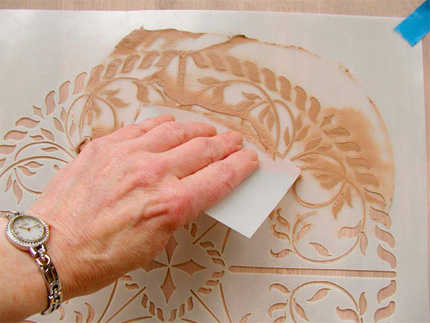 Stencils for decorative plaster will help create original design elements
Stencils for decorative plaster will help create original design elements In addition, there is another possibility to give a unique look to the walls in the bathroom. To do this, use stencils for decorative plaster. They allow you to apply a pattern over a layer of plaster, which will give the wall a unique and original look.
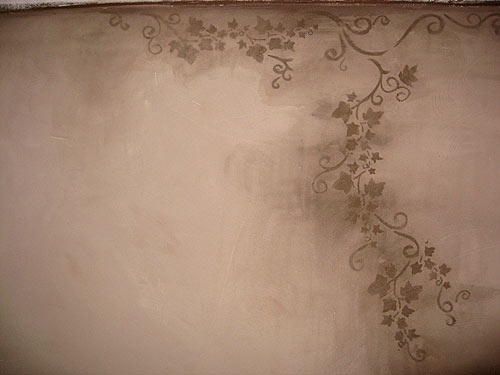 The result of using a stencil when applying decorative plaster
The result of using a stencil when applying decorative plaster How can I do that?
The most important thing that is necessary for the implementation of the project is your desire. The process is quite long and complicated. But if you decide that plastering the walls in the bathroom is the best finishing option, then all that remains is to start implementing the plans.
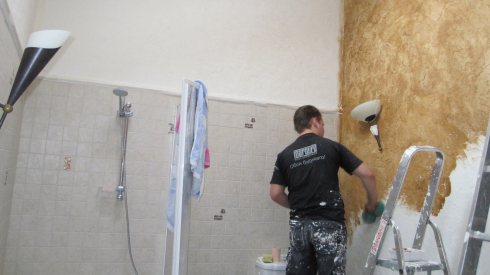 If you still decide, then let's get started!
If you still decide, then let's get started! The very first task will be to determine what the overall finish should be and what materials should be used. At the same time, it is worth deciding in advance on the use of a protective coating - the surface of the plaster in the bathroom is often coated with wax to make the coating water resistant.
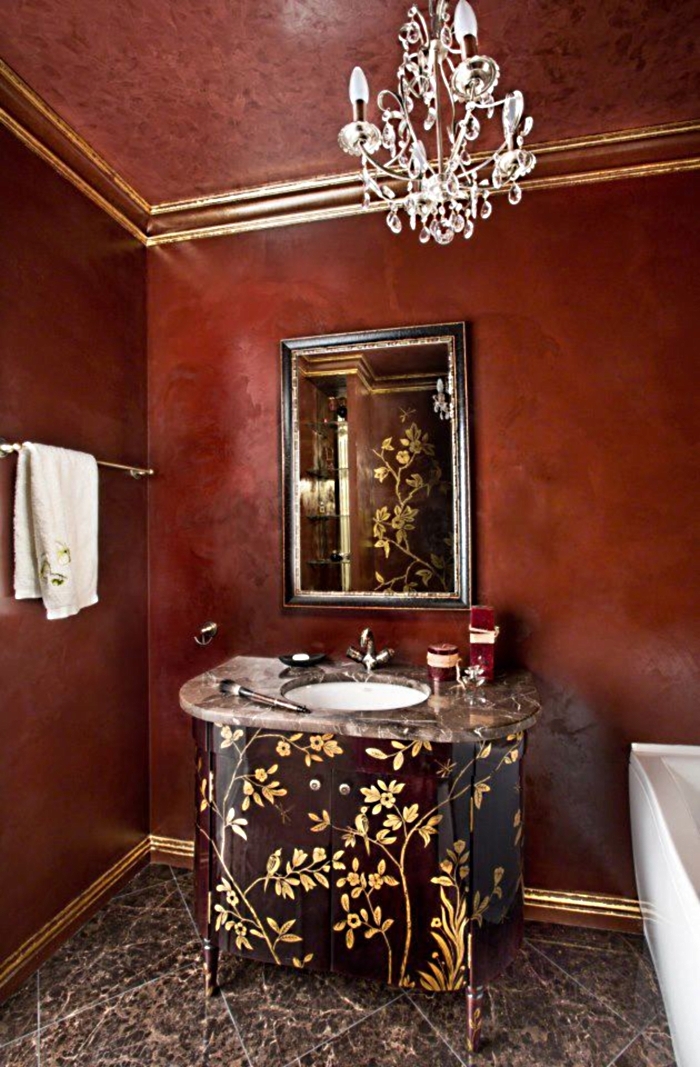
It does not make sense to describe in detail the coating technology, each type of plaster has its own characteristics, but some general requirements for various materials need to be paid attention to.
If decorative plaster is applied, whether it is a bathroom or any other room, it is applied to a dry and clean base without traces of previous paint and oil stains. The surface in the bathroom before applying the plaster must be prepared in a special way.
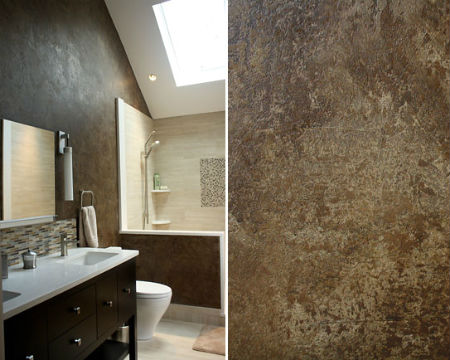 Hi - Tech version of decorative plaster in the bathroom
Hi - Tech version of decorative plaster in the bathroom First you need to apply a waterproofing layer. It will prevent the entry of moisture and salts from the walls, and also serve as a barrier to the formation of mold. Sanitizing plaster, which has already been described earlier, is very well suited as a material for this. In addition, it will level the surface, on which decorative plaster will subsequently be applied.
After leveling, the surface is primed, only then can decorative plaster be applied directly in accordance with the instructions on the package.






